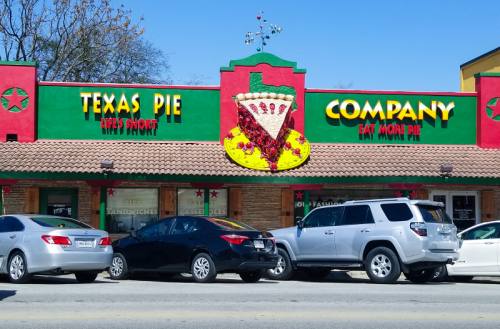What is in a brand?
David Wyatt, a director at Elizabeth Christian Public Relations, has experience in branding places, such as the city of Marfa and Austin’s Cultural Arts Division, and said as Austin grows, surrounding cities have the potential to become like New York City’s boroughs with their own unique vibe. “What’s happening already is that as [Austin] keeps growing out, it’s approaching and consuming these smaller communities, and if these cities don’t actively work to communicate what they’re about, they’ll just become a proximity town, [where] residents don’t have a relationship with the small town,” Wyatt said. Branding a city, Wyatt said, is not only about drawing more tourism and development traffic or building a sense of community. “Hitting the right note is important because not only do you not want to be seen as phony but ultimately, [it] is not just the logo. It’s not just a cute tag line or the color palette you come up with, it’s about reflecting people’s actual experiences,” he said. “It’s one thing to see the brand; it’s another thing to experience it.” Buda Tourism Director Lysa Gonzalez said cities promote themselves to get people to stay in their hotels, which generates a hotel occupancy tax that gets returned to the city. Beyond using hotel tax revenue, which is not always reliable in tracking travel dollars, Wyatt said monitoring social media, digital media, inquiries into businesses and media coverage are good ways to track what is working. Rebecca Ybarra-Ramirez, director of the San Marcos Convention and Visitor Bureau, said San Marcos uses a third-party company that can track people entering San Marcos through their technology devices from when they first researched the city to when they first arrived. “Most [advertisements] are digital these days because you can capture a larger audience,” Ybarra-Ramirez said. “You can select who you want to see and how many people your [advertisement] can reach depending on your budget. It’s really interesting what technology can do these days, but it gives us a better idea of what markets we are not targeting and can do better with.”Kyle becomes ‘certipied’
Ybarra-Ramirez said San Marcos focuses more on visual images when branding the city and rotates different campaigns each year for variety. Gonzalez said Buda’s tagline, “Breathe Easier Here,” separates Buda from Austin because of the city’s calmer, outdoorsy small-town charm. According to Kyle Mayor Travis Mitchell, the pie capital initiative is a way for Kyle to stand out from Austin’s shadow. “By being an Austin suburb, we have great opportunities, but we also struggle with the region trying to define who we are instead of us trying to define ourselves,” Mitchell said. “We need to encourage development patterns that set [Kyle] up to be a robust and diverse city. Things like walkability and sense of place don’t happen on their own, not when you are an Austin suburb. To create that identity or sense of place requires the community demanding it.” City of Kyle Chief of Staff Jerry Hendrix said the city has been brainstorming for years on how to brand the city; however, Communication Specialist Kim Hilsenbeck said enough input from the community and visitors showed that Texas Pie Co. was one reason people visited Kyle.'>
“We’ve heard time and time again that, ‘Well, I came [to Kyle] for pie.’ So at the moment, [tourists] are coming for one company that serves sweet pie, but what they maybe don’t realize is that there are a bunch of other types of pie,” Hilsenbeck said. “We already have several companies that sell pie, but we don’t tend to think of it that way. We want people to think of pie as something a little bit broader.”
Hilsenbeck said the plan to officially become the “Pie Capital of Texas” is not completely “outlined, detailed and fleshed out,” but the city is working to put together a branding committee, made up of business owners and city officials, that would forge the way of the initiative on the local level.
So far in Kyle’s journey to become established as the “Pie Capital of Texas,” the city applied for an official U.S. trademark branding Kyle as the “Pie Capital of Texas” in March 2017; held its inaugural Pie in the Sky Hot-Air Balloon Festival during Labor Day weekend; joined the American Pie Council; launched its “certipied” business initiative on National Pie Day in January; and launched a community outreach initiative on National Pi Day, March 14.
Kyle Economic Development Director Diana Blank-Torres said the city has actively started recruiting pie-manufacturing companies and pie restaurants.
Sellers said Kyle is in a very good place from a growth, economic development and infrastructure standpoint.
“We have matured significantly over the past couple of years,” Sellers said. “The city’s location and favorable development climate has brought a large number of prospects to Kyle. In the near future, we will see some significant economic development progress.”
On the local level, Kyle’s “certipied” business initiative asks business owners to incorporate pie into their business. For example, Hampton Inn gives out pie-shaped and -scented candles to guests and businesses. Broadway Bank will be the official sponsor for all pie-eating contests in Kyle. Financial advisor Trish Wilder, Edward Jones has pie cutters with the logo on them, and Sky Realty Kyle gives pies bearing its logo to new customers who buy a home with them.
“[The pie capital initiative] is more than Texas Pie Company already,” Hilsenbeck said. “We see this [as] an economic boon to anyone that gets [certipied] and probably peripherally for those who do not get involved because ideally it will cause more traffic, more tourism, more people going to businesses and spending money while they are here. It’s not like we’re giving people money to become ‘certipied’; it’s more of a promise. The more people that get involved and embrace it, the better off everyone is.”







